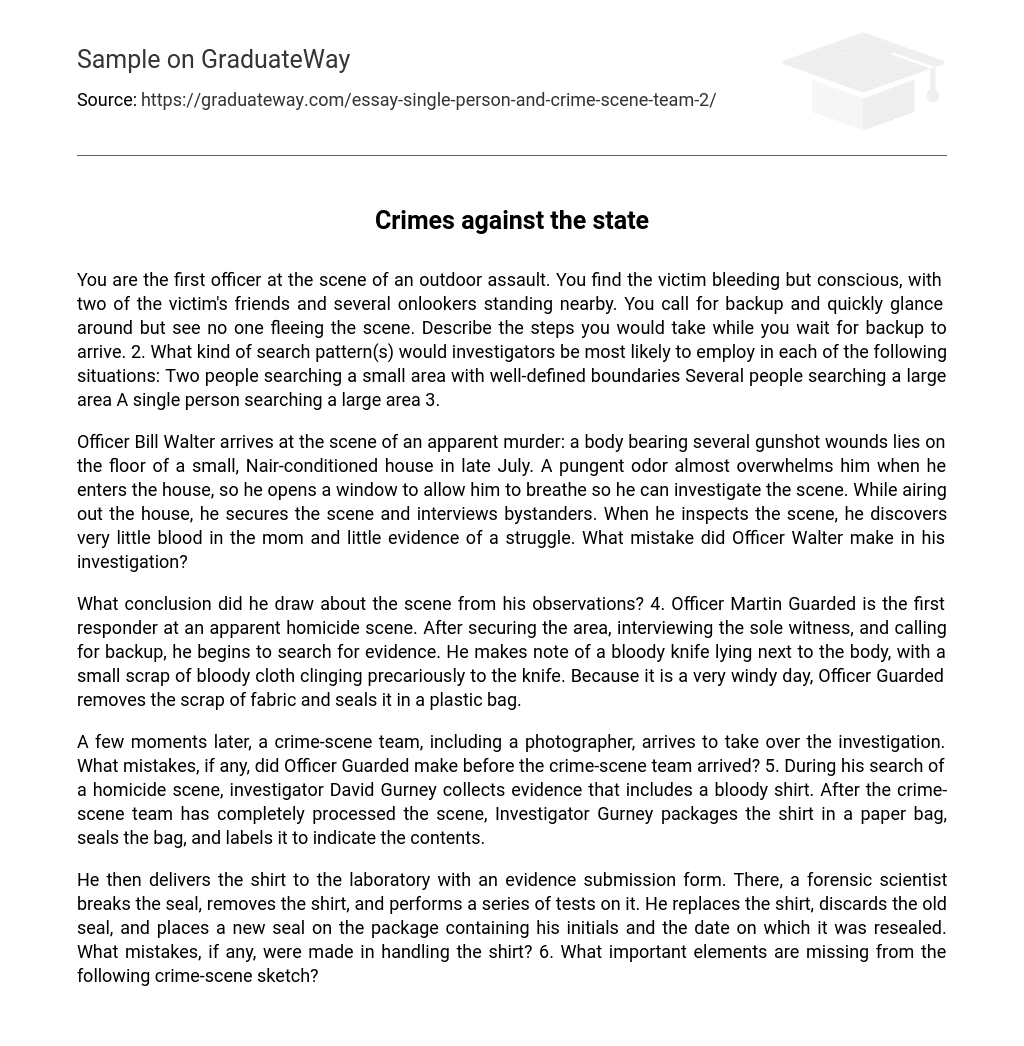You are the first officer at the scene of an outdoor assault. You find the victim bleeding but conscious, with two of the victim’s friends and several onlookers standing nearby. You call for backup and quickly glance around but see no one fleeing the scene. Describe the steps you would take while you wait for backup to arrive. 2. What kind of search pattern(s) would investigators be most likely to employ in each of the following situations: Two people searching a small area with well-defined boundaries Several people searching a large area A single person searching a large area 3.
Officer Bill Walter arrives at the scene of an apparent murder: a body bearing several gunshot wounds lies on the floor of a small, Nair-conditioned house in late July. A pungent odor almost overwhelms him when he enters the house, so he opens a window to allow him to breathe so he can investigate the scene. While airing out the house, he secures the scene and interviews bystanders. When he inspects the scene, he discovers very little blood in the mom and little evidence of a struggle. What mistake did Officer Walter make in his investigation?
What conclusion did he draw about the scene from his observations? 4. Officer Martin Guarded is the first responder at an apparent homicide scene. After securing the area, interviewing the sole witness, and calling for backup, he begins to search for evidence. He makes note of a bloody knife lying next to the body, with a small scrap of bloody cloth clinging precariously to the knife. Because it is a very windy day, Officer Guarded removes the scrap of fabric and seals it in a plastic bag.
A few moments later, a crime-scene team, including a photographer, arrives to take over the investigation. What mistakes, if any, did Officer Guarded make before the crime-scene team arrived? 5. During his search of a homicide scene, investigator David Gurney collects evidence that includes a bloody shirt. After the crime-scene team has completely processed the scene, Investigator Gurney packages the shirt in a paper bag, seals the bag, and labels it to indicate the contents.
He then delivers the shirt to the laboratory with an evidence submission form. There, a forensic scientist breaks the seal, removes the shirt, and performs a series of tests on it. He replaces the shirt, discards the old seal, and places a new seal on the package containing his initials and the date on which it was resealed. What mistakes, if any, were made in handling the shirt? 6. What important elements are missing from the following crime-scene sketch?





